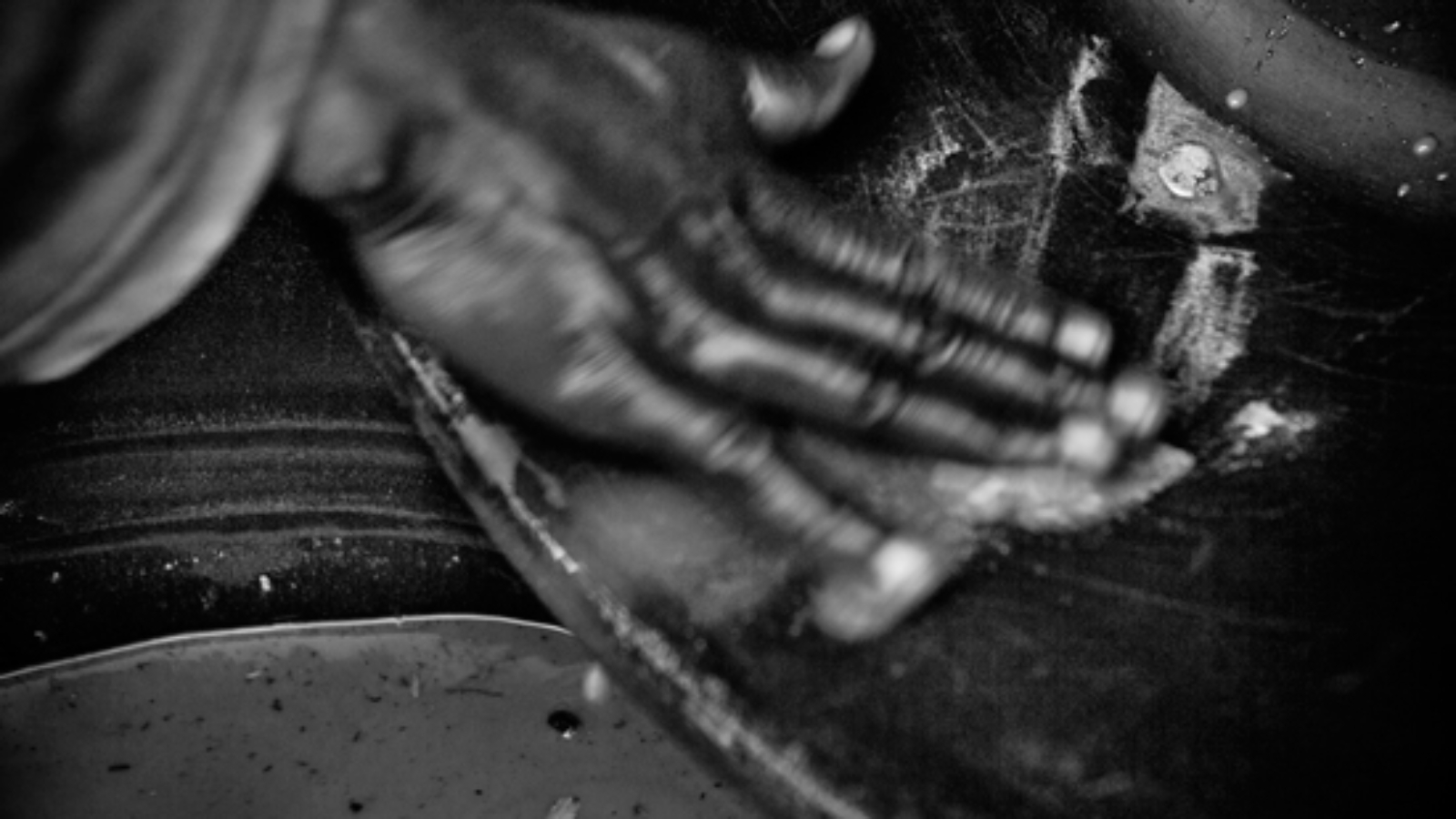By Thomas Lee
Dunkwa-on-offin, Ghana—An illegal gold mine collapsed in these remote jungles on June 27, 2010, after heavy rains hit central Ghana. At least 100 people were buried, but that’s just an estimate. The owner had no idea how many of his 136 hires were working at the time of his arrest, and the dozen illegal miners who survived kept their mouths shut, fearing prosecution. This is hardly a rare incident, but it provides a vivid snapshot of the deeply rooted abuses in Ghana’s ancient and ever more profitable gold complex. Theo and his team head to work as dusk begins to fall at the illegal gold mines in the bush of Kenyasi, Ghana.
Formerly known as the Gold Coast, Ghana remains one of Africa’s biggest producers of the precious ore. Most of this valued metal is extracted by multinational corporations, especially today as its world price hovers above $1,200 an ounce. In many villages the foreign firms have ravaged the land and given little back to the communities. The locals ought to work their own gold. And they do—illegally. Today these village workers comprise one of the world’s largest illegal gold mining industries, a million-strong workforce known as galamsey—“gather and sell,” an entire underground gold trade whose workers, or victims, are scattered in pockets throughout the country.
Some dig out gold-rich rocks from mines 400 feet below surface, some mill the stones to extract the gold from the rock and soils using a potentially lethal mercury process. Others treat the amalgams to purify and refine the gold. They are said to turn out 100,000 ounces of gold each year in the face of police crackdowns, mercury poisoning, lung diseases, and the ever-present risk of being buried alive. Today, thousands continue to flock to the galamsey trade, hoping to strike it rich. They often operate as teams and call each other “brother”—gold brothers. This portfolio tells the story of one such group.
Theo became a galamsey miner as a teenager. He remembered those days when a single site could employ 10,000 people, when older gold brothers would track the big firms’ mines and operate galamsey sites under their noses, when a month’s wages at the illegal mill on the outskirt of his home town Konongo would beat a year’s work on the farm. Nobody warned Theo, though, as he entered his twenties, that the Ghanaian government, pressured by the multinationals, would turn an iron fist on galamsey. The police would shut down each site he joined, none operating more than six months before these itinerant bands of gold brothers would need to move on, heading inexorably south to Obuasi, then Prestea, in search of new galamsey fields to conquer.
In 2008 Theo, now 22, found himself in Kenyasi, a rural village in the western Ashanti region, sharing a room 500 square feet with eight other gold brothers. The flat was hardly a living space—just four sheer walls to hide them from the villagers, who were not in on their secret source of work and money. Each day, the team slept on the concrete floor, awoke in late afternoon, commuted to the galamsey site some two miles away, and worked from dusk till dawn deep in the pitch dark bush with about 60 others. Mercury, which they call “Med,” is handled with bare hands. Mosquitoes are rampant and the chance of malaria is high. The grinder jams, the generator runs out of fuel, the wash boards lack water to filter properly. The stones hold so little gold that a full night’s labor might only produce a handful of dime-sized nuggets. Then, before the sun rises, the machines must be taken apart and buried under dirt piles, to minimize any hint of the operation. Then, the gold brothers return to their small flat and rest up for another night’s labor.
 Dust and gold mineral are washed off the screening blanket by hand and collected.
Dust and gold mineral are washed off the screening blanket by hand and collected.

 Gold slurry is washed through a screening blanket that traps the gold mineral for the next stage in the refining process.
Gold slurry is washed through a screening blanket that traps the gold mineral for the next stage in the refining process.
 Gold workers, some not more than children, in the final stages of extracting and refining.
Gold workers, some not more than children, in the final stages of extracting and refining.
 Dawn is rising and the workers clean up their remote, secret camp.
Dawn is rising and the workers clean up their remote, secret camp.

Born in Taipei, educated in Chicago, and now based in Hong Kong, Thomas Lee’s photos have been published in The New York Times, Rolling Stone, The Guardian and Time. Inspired by “The Money Stone,” director Stuart Harmon’s documentary-in-progress on Ghana’s galamsey industry, Lee shadowed a group of illegal gold workers.
